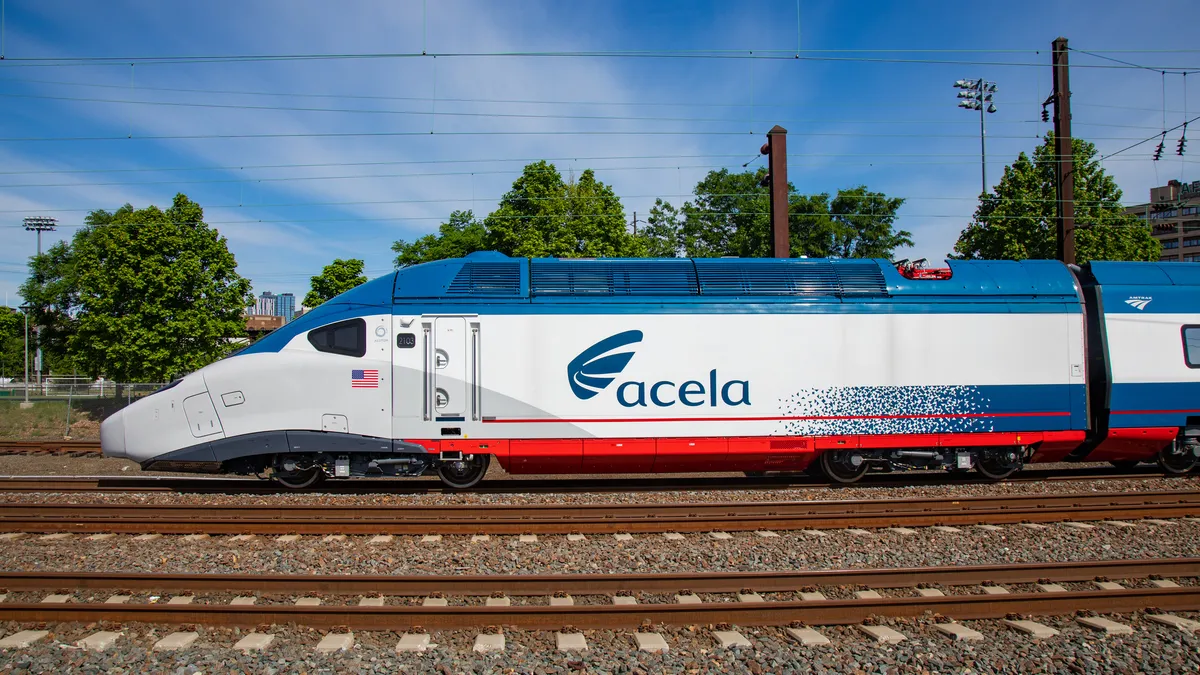Earlier this week, the White House released its budget request for fiscal year 2023, which included $3 billion for Amtrak in its annual appropriation. Jim Mathews, president and CEO of the nonprofit Rail Passengers Association (RPA), called this "great news with an asterisk," in an email.
On the plus side, that figure includes money beyond the $13.2 billion already tagged for the Federal Railroad Administration in the bipartisan infrastructure law. But, Mathews explained, it's about $4 billion less than the level authorized in the bipartisan infrastructure law. "Our country has decades of neglect to reverse, and it's disappointing that the appropriation doesn't fully fund the authorized levels," he said.
A survey released this month by the RPA found that 78% of voters across the country say it’s important for the country to have a strong passenger rail system. Support is strongest among urban dwellers at 82%, with 78% of suburbanites and 74% of rural residents saying that a strong rail network is important.
More money for electric buses and EV chargers
The White House also requested $50 million for grants to help transit agencies shift to zero-emission vehicles, which would come on top of $1.1 billion from the infrastructure law, for the procurement of low- and no-emission public transportation buses. Separately, the administration's goal of building out a network of electric vehicle charging stations across the country would benefit from $1.4 billion in grants included in the budget.
New York MTA redesigning bus routes in Queens, Bronx
The New York Metropolitan Transportation Authority announced plans this week to redesign the bus network in Queens. MTA Chairman and CEO Janno Lieber said a failed attempt to do so in 2019 "didn’t get all that well received."
The transit agency also plans to begin implementing its redesign of the Bronx bus network this summer. Such major overhauls of long-standing bus routes involve planning for better ways to serve transit-dependent communities, preparing for the transition to zero-emission buses, improving ride times and driver scheduling, according to experts that Smart Cities spoke with for an upcoming story.
Los Angeles and Orlando, Florida, join international coalition to advance urban air mobility
The two U.S. cities and the state of Massachusetts are among the founding members of a coalition formed by the World Economic Forum to collaborate on ways to adopt the coming wave of aerial delivery drones, so-called flying taxis and other airborne vehicles.
The coalition aims to bring the city and regional leaders together with industry leaders to help develop policies around this new technology. “As a future-ready city, the City of Orlando wants to be prepared to embrace new transportation amenities that enhance our regional connectivity and allow us to efficiently move residents, visitors and goods throughout our community,” Orlando Mayor Buddy Dyer said in a statement.
Are VTOLs ready for takeoff?
Winged aircraft that can take off straight up and then begin forward flight, like helicopters, is not a new idea. These vertical takeoff and landing (VTOL) planes saw much experimentation and development beginning in the 1950s and 1960s. The most successful — such as the Bell Boeing V-22 Osprey and the Harrier "jump-jet," which first flew in 1966 — have been for military use.
But a new generation of VTOL aircraft for civilian aviation promises new uses and new competition for existing modes of passenger and freight transportation. Odys Aviation is working on a design to carry up to nine people on routes of 200 to 500 miles. Those are the same distances that high-speed rail planners target and that Amtrak seeks to serve with its corridor expansion plan.
James Dorris, one of the founders of Odys Aviation, described the company's vision of VTOL transportation as "infrastructure-light," meaning it would use existing facilities such as local and general aviation airports.
Building high-speed rail can be enormously expensive: The current estimate for the cost of California's project to link Los Angeles and San Francisco is $105 billion. Dorris acknowledged that high-speed rail will be more environmentally efficient, but he said that as the new generation of VTOL aircraft comes online, "it is going to be a very difficult choice to invest in infrastructure-heavy approaches to transportation."
We'll be looking further into the future role of VTOL aircraft in urban and intercity mobility in upcoming stories.
Have a transportation tip or other thoughts to share with Smart Cities Dive Transportation Reporter Dan Zukowski? Reach out to him via Twitter or email.












